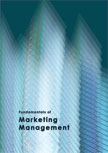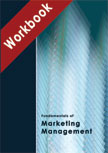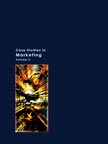Coca-Cola's Belgian Crisis - The Public Relations Fiasco
|
|
ICMR HOME | Case Studies Collection
Case Details:
Case Code : MKTG097
Case Length : 12 Pages
Period : 1999
Organization : Coca Cola
Pub Date : 2004
Teaching Note :Not Available
Countries : Belgium, Europe
Industry : Beverages - Carbonated Soft Drinks
To download Coca-Cola's Belgian Crisis - The Public Relations Fiasco case study
(Case Code: MKTG097) click on the button below, and select the case from the list of available cases:

Price:
For delivery
in electronic format: Rs. 300 (Approx 6.6 $/3.4 £ /5.1
€);
For delivery through courier (within India) : Rs. 125
» Marketing Case Studies
» Marketing Management Short Case Studies
» View Detailed Pricing Info
» How To Order This Case
» Business Case Studies

Please note:
This case study was compiled from published sources, and is intended to be used as a basis for class discussion. It is not intended to illustrate either effective or ineffective handling of a management situation. Nor is it a primary information source.
Chat with us

Please leave your feedback

|
|




<< Previous
The Recall Contd...
|
The entire episode left more than 240 Belgians and French, mostly school
children, ill after drinking Coke produced at Antwerp and Dunkirk.
The company had to assure its British customers that the products made in its UK
factories were safe.
By June 15, 1999, Coca-Cola had recalled about 30 million cans and bottles, the
largest ever product recall in its 113-year history.
For the first time, the entire inventory of Coca-Cola's products from one
country was banned from sale.
|

|
Background Note
Dr. John Pemberton (Pemberton), an Atlanta-based pharmacist, developed the
original formula of Coca-Cola in 1886. It was based on a combination of
oils, extracts from coca leaves (cola nut) and various additives. The
ingredients were refined to create a refreshing carbonated soda. Pemberton's
bookkeeper, Frank Robinson (Robinson), suggested that the product be named 'Coca-Cola'. He also developed a way of lettering Coca-Cola in a
distinctively flowing script. On May 8, 1886, Coca-Cola went on sale for the
first time in the Joe Jacobs Drug Store.
|
|
The first
Coca-Cola advertisement appeared in The Atlanta Journal on May 29, the
same year. Pemberton, with modest help from several investors, spent
$73.96 on advertising, but was able to sell only 50 gallons of syrup at
$1 per gallon. The product slowly gained acceptance after the makers
gave out a large number of free samples.
In 1888, after Pemberton's death, Asa Candler, Pemberton's friend and a
wholesaler druggist, purchased a controlling stake in the company.
Coca-Cola sales soared even without much advertising and as many as
61,000 servings (8 ounces each) were sold during 1889. |
Sensing the potential of the business, Candler decided to
wind up his drug business and be associated with Coca-Cola full time. As
business expanded, Candler also increased the advertising outlay. By 1891,
Candler had complete control of Coca-Cola for $2,300. In 1892, Candler formed
'The Coca-Cola Company' and a year later registered 'Coca-Cola' as a trademark.
Only Candler and Pemberton's associate, Robinson, knew the beverage formula. It
was passed on only by word of mouth and came to be known as the 'most closely
guarded secret in American industry.' Despite occasional rumours, company
sources insisted that cocaine was not an ingredient in Coca-Cola's formula...
Excerpts
>>
|
|










